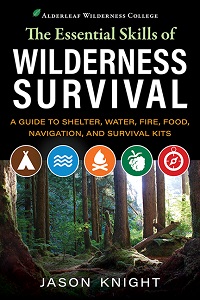Explore the 2023 guide to selecting ‘Clothes for Backpacking.’ Learn about base to outer layers, fabric choices, cleaning tips, and more for a superior hiking experience!
Are you planning a hiking adventure and wondering what to wear? Selecting the right clothing for hiking is crucial as it can impact your comfort, safety, and overall experience on the trail.
From base layers to outerwear, each piece needs to be meticulously chosen to withstand the terrain’s demands.
In this article, we aim to guide you on what to pack for your backpacking trip, focusing on the optimal hiking attire.
Discover the importance of selecting the right fabrics, understanding layering, and even learn how to clean your clothes while on the move.
Get ready to venture into the wild confidently with our comprehensive list of top-recommended “Clothes For Backpacking” in 2023!
- Comprehensive guide on essential hiking attire selection.
- Analysis on the role of fabric selection in hiking apparel.
- Deep dive into necessary hiking clothing items and their significance.
- Tips on cleaning and maintaining hiking attire while on the trail.
In This Article
Essential Attire for Backpacking Trips
Planning a backpacking trip involves a myriad of preparations, prominent among which is choosing the right attire.
Whether you’re hiking in the rainforests or climbing frosty mountains, your clothing can drastically impact your comfort and safety.
Let’s delve into the essentials of hiking attire by determining the best clothes for backpacking
Essential Intimates and Socks
The journey of a thousand miles begins with a single step – preferably, in comfortable underwear and socks. Choosing intimates that are breathable, lightweight, yet durable forms the first line of defense against discomfort during your trek.
Synthetic or merino wool blends offer excellent moisture-wicking properties, keeping you dry and avoiding chafing.
Hiking socks, preferably the kind designed with a blend of wool, nylon, and spandex, provide cushioning, while also keeping moisture away.
Ideal Hiking Ensembles (Base Layers)
Base layers are fundamental to regulating your body temperature while you conquer the trails. These clothes sit directly on your skin and need to possess excellent sweat-wicking capabilities. Material choice can vary from synthetic fibers like polyester or natural ones like merino wool. Both work great in absorbing sweat from your body, and redistributing it to the outer layers of the fabric where it
Breaking Down Fabrics in Hiking Wear
When it comes to outdoor adventures, the fabric of your attire plays a crucial role in your overall hiking experience. Different fabrics offer varying degrees of breathability, durability, and warmth. Here, we dissect the characteristics of various fabrics popular in hiking wear.
Natural Vs Synthetic Fabrics
Natural fabrics like cotton, silk, and wool are renowned for their softness and comfort. But for hiking, it’s best to avoid cotton due to its tendency to hold onto moisture. Wool, particularly merino, is an excellent choice for hiking attire due to its natural temperature regulation and sweat-wicking abilities.
In contrast, synthetic fabrics like polyester, nylon, and spandex dry faster than natural ones, making them a popular choice in hiking wear. They are lightweight, durable, and effectively wick sweat away from the body, keeping you dry and comfortable during intense physical exertion.
Understanding Fabric Blends
Sometimes, the best hiking wear utilizes a careful blend of synthetic and natural fabrics to offer optimum functionality.
When woven together, these materials can provide the softness of natural fibers with the superior moisture management of synthetics. These blends usually feature polyester or nylon mixed with spandex for added stretch and mobility.
Specialized Outdoor Fabrics
For those colder trails or rainy days, waterproof, or insulated fabrics might comprise a portion of your ensemble.
Materials like Gore-Tex and eVent can be used in jackets and pants to create a shell layer that is both wind and waterproof, yet breathable. They ensure you stay dry in light showers and can withstand a certain amount of water pressure.
Insulated fabrics, which you may find in mid-layers or outer layers, help to trap heat and keep you warm in cooler conditions. These can be made from down, synthetic materials, or a blend.
Synthetic insulation has the advantage of retaining warmth even when wet, whilst down provides unbeatable warmth to weight ratio, making it a favorite despite performing poorly when wet.
Fabric Weight and Your Comfort
Another key consideration is the weight of the fabric. Heavy-duty fabrics might provide more warmth and durability but can also add weight to your backpack and could lead to overheating, especially in warmer weather.
On the other hand, lightweight fabrics breathe well and are comfortable on warm days but may not provide the necessary warmth in colder conditions. Understanding your trail and weather conditions will be instrumental in deciding what weight of fabric is optimal.
As you can see, knowing the ins and outs of your hiking clothing
materials can make the world of difference to your comfort and performance on the trail. By being knowledgeable in this area, you can better curate your hiking wardrobe to match the conditions you will face, leading to a more enjoyable and fulfilling backpacking experience.
Understanding the Need for Base Layers
Base layers are the unsung heroes of a successful hiking trip. These pieces of clothing, which sit directly against your skin, help to regulate body temperature while wicking away sweat. Quality base layers are close-fitting to optimize moisture management and should feel comfortable and non-restrictive.
Finding the Right Base Layer
Choosing the right base layer involves an understanding of fabric types and what they offer. Synthetic, lightweight polyester layers are ideal for warm weather, offering excellent moisture-wicking properties. In contrast, merino wool is perfect for colder hikes, providing warmth while still maintaining sweat-wicking abilities.
Versatility is Key
To remain comfortable in varying weather conditions, it’s smart to have a variety of base layers at hand. For instance, you might start a day in cool temperatures wearing a merino wool long-sleeve, but as the day warms up, you could switch to a short-sleeved polyester top to stay cool. This highlights the importance of versatility and layering in hiking attire.
Base Layers Beyond Shirts
While shirts are the most common base layers, bottoms, too, come in varying fabrics and styles meant to keep you comfortable on the trail. From moisture-wicking briefs and sports bras to thermal leggings, these base layers are essential in maintaining body temperature and ensuring comfort during your hike.
Don’t underestimate the difference a good base layer bottom can make on a cold morning hike or a windy evening around the camp.
In summary, investing in good quality base layers that suit your hiking conditions and personal comfort is key to enjoyable and comfortable hiking experiences. Next, we dive into another essential element of hiking attire – what to wear on the outside!
A Deep Dive Into Hiking Shirts, Shorts, and Trousers
A perfect balance of style, comfort, and functionality makes up the ideal hiking outfit. Let’s delve into specifics on hiking shirts, shorts, and trousers and understand how these can influence your hike.
Hiking Shirts
Whether you’re a fan of long sleeves, short sleeves, or convertible options, hiking shirts are designed for optimized protection and comfort.
Long-sleeved shirts provide better protection from the sun and bugs but may be hotter in warmer temperatures.
Short-sleeved shirts are great for hotter hikes; however, they expose your skin more to the elements.
Convertible shirts provide the best of both worlds with features like roll-up sleeves. When choosing a shirt, ensure it offers a good fit and made of fabric that dries quickly and wicks away sweat.
Hiking Shorts & Trousers
Your bottom wear choice hinges on the level of exposure to elements and the temperature. Shorts are perfect for hot weather hikes or when you aren’t worried about tall grass or bugs. For colder weather or if protection is a priority, trousers are recommended.
Convertible pants which unzip to become shorts offer versatility. When looking into hiking bottoms, consider factors like pockets, built-in belts, and gusseted crotches for enhanced mobility.
Remember, while appearance does matter, choose your hiking shirts, shorts, and trousers based on comfort, protection, and suitability to the hiking conditions at hand. Up next, learn about the next layer of attire that could be vital on your hiking trip.
Hiking Shorts For Men
- RELAXED FIT. Designed with a relaxed fit and comfort waistband, these cargo shorts are made to keep you comfortable through any activity. These shorts feature a 10-inch inseam that hits right at the knee for all day comfort.
- COMFORT FLEX WAISTBAND. Designed with comfort in mind, our innovative flex waistband ensures a comfortable fit that moves and bends with you. Stretch fabric allows natural range of motion with every activity.
- US size, Men’s shorts with partial elastic waist for comfort fit, equipped with a belt, Suitable for most people and body shape. Elastic wear, water repellent, wear-resisting, breathe freely, comfortable.
- Mens casual shorts using high performance wicking fabric for outdoor sports, Lightweight short features Omni-Wick technology that pulls moisture away to keep you cool and dry, Suitable for most men, boys or teens.
- Lightweight Running Shorts: Quick drying, moisture wicking and lightweight sports fabric wicks sweat from the skin to help you stay comfortable and dry.
- Three zipper pockets, athletic shorts with three deep zippered pockets for storage while exercising.
- TRADITIONAL CARGO STYLE. Built for versatility and comfort, this classic cargo short takes you from the outdoors to work, to every day with this timeless silhouette
- RELAXED FIT. These cargo shorts sit at the natural waist with a relaxed seat and relaxed fit through the thighs. This short is built with a 10-inch inseam and will keep you comfortable all day.
- Lightweight & Breathability: Men’s athletic hiking Shorts are made quality 4-Way Stretch/breathable and quick-drying fabric helps to wick away moisture and dry quickly keep you cool. A synthetic of polyester and spandex can be very durable, abrasion-resistant, and stretchy enough to allow for better mobility.
- UNIQUE: Exercise cool Shorts have stylish casual breathable holes on both sides, designed exclusively by NORTHYARD. Soft Elastic waistband/ built-in adjustable drawstring for custom fit, flatlock seams reduce chafe for additional comfort and ease of movement.Two stylish reflective strips at the front and back allow you to improve safety in low-light situations.
Hiking Shorts For Women
- ADVANCED TECHNOLOGY: 4-way stretch, breathable fabric wicks moisture away from your skin to keep dry all day. Durable water repellent finish to repel light rain and stains
- SUN PROTECTION: UPF50 fabric blocks harmful UV rays, provides excellent protection against sunburn
- Experience ultimate comfort with our wide knit waistband that’s made of skin-friendly and soft fabric. built-in drawstring, elastic belt suitable for various figures, It offers a smooth, low-friction performance that feels super comfortable
- Stay cool and comfortable on summer adventures with our sleek and svelte 5″ inseam design and quick-dry fabric that won’t make a ‘swishing’ noise while walking
- Crafted of lightweight, breathable, water-resistant and quick-dry fabric offers UPF 50+ for excellent UV protection, the women’s cargo shorts keep you cool and fresh all day.
- These women outdoor shorts features 4-Way stretch comfortable construction but keep their shape and looked good at the end of the day.
- Soft lightweight splash-resistant quality fabric with slight stretchy make hiking shorts comfortable, breathable, flexible and give easily with motion.
- Women’s cargo shorts feature light water resistant, wicks away moisture and fast drying, keep you cool on rainy hikes while UPF 50+ offer sun protection.
The Importance of Mid Layers in Hiking
While base layers manage body temperature and sweat, it’s often your mid-layers that provide the much-needed warmth on colder trails or after sundown.
Defining Mid-Layers
Mid-layers essentially serve as insulation, trapping body heat to keep you warm. They are meant to be worn over your base layer and typically consist of items like lightweight fleeces, down jackets, or synthetic insulated jackets.
Choosing the Right Mid-Layer
The choice of mid-layer depends on the weather and trail conditions. In mild weather, a fleece might be more than enough insulation. However, in colder or windier conditions, you might prefer the warmth of a down or synthetic insulated jacket.
Keep in mind that mid-layers should provide warmth but also allow for breathability to prevent overheating. The most effective mid-layers are those that can be easily added or removed as the conditions change.
Remember, effective layering is a balance between warmth, breathability, and your personal hiking conditions. Befriend the mid-layers, and you’ll always be ready for what the trail holds for you. Next, we put the focus on to bracing against harsher elements with outer layers.
Must-Have Protective Layers
Outer layers, also known as shell layers, are aimed at protecting you from the elements. They are designed to combat wind, rain, and snow while allowing for decent breathability. These could make all the difference in ensuring your safety and comfort on the trail.
Jackets and Pants: Your Shield Against Weather
Key elements in the outer layer family are jackets and pants. Opt for those made from water and wind-resistant materials like Gore-Tex or eVent. In addition to being water and windproof, your outer layer should also be durable to withstand the rigors of the trail.
Importance of Breathability and Ventilation
While keeping the elements out, your outer layer should also let sweat escape to prevent condensation build-up inside, which can lead to a damp and cold hiker. Features like pit zips, core vents, and two-way zippers can increase ventilation, providing an overall better hiking experience.
In sum, your outer layers serve as your primary defense against inclement weather, and choosing wisely can mean the difference between a treacherous trek and a triumphant ramble. As we wrap ourselves with warm outer layers, let’s not forget the need for comfortable camp sleepwear for those overnight hikes!
- OMNI-TECH: Our proprietary technology provides air-permeable protection that’s waterproof and breathable, keeping mother nature’s elements out, at the same time allowing the inside to breathe, keeping her dry and comfortable no matter the conditions.
- WATERPROOF AND BREATHABLE WINTER COAT: Made with advanced technology materials it’s a wet-weather jacket designed to keep you incredibly comfortable and dry when you need it most.
- WATERPROOF TECHNOLOGY: You’ll love our Columbia Men’s Glennaker Lake Rain Jacket, it features our Hydroplus waterproof nylon fabric for the ultimate in lightweight, wet weather, protection and comfort.
- COMPACT AND PACKABLE: A versatile waterproof jacket with an attached hood to ensure complete rain coverage, while its packable design lets you stow it away into its own chest pocket. Perfect for when the last drizzle subsides.
- Outershell: Polyester; Inner: soft fleece is Lightweight, Breathable
- Multi-Pockets: two shoulder pocket; forearm pocket on left arm; two front slash, zippered chest pockets; two zippered back pockets; vent zipper under each arm.
- COMFORTABLE RAIN JACKET: The Columbia Women’s Switchback III Waterproof Rain Jacket is a lightweight waterproof rain coat designed to keep you perfectly dry.
- ADVANCED TECHNOLOGY: This light rain jacket features our waterproof Hyrdroplus 100% nylon shell designed to keep you dry and protected in even the hardest of downpours.
- WATERPROOF & WINDPROOF – This jacket features DWR Finish and PU coated membrane offers waterproof performance protect you from wet weather, critically seam sealed keep you dry and comfortable
- ADJUSTABLE FIT – 1)Attached hood with peripheral cord is highly adjustable and friendly, it can be rolled into collar when not in use;2)Hook-and-loop cuffs and elastic drawcord hem block out wind and provide a secure fit;3)Lined Chin Guard for ultimate comfort;4)A storm flap with a Velcro closure covers the center front zip
- SOFT FABRIC: This Columbia Women’s Benton Springs Full Zip fleece is crafted of soft 100% polyester MTR filament fleece for ultimate warmth.
- HANDY FEATURES: This Columbia women’s fleece jacket features two side zippered security pockets to keep your small items secure.
Also Read: Lightweight Hiking Gear For Women
Selecting the Right Sleepwear for Camping
Comfort is key when it comes to selecting sleepwear for your hiking trip. After a day on the trail, your body needs proper rest. Having the right sleepwear can ensure you get a good night’s rest and are recharged for the adventure awaiting the next day.
Creating the Perfect Sleep Layer
Ideally, your sleepwear for camping should be separate from your backpacking clothes. This ensures that sweat or dirt from the trail doesn’t affect your sleep. Moreover, a set of clean, dry clothes to sleep in can contribute majorly to your comfort factor.
Choosing Your Fabric
The choice of fabric for your sleepwear can have a considerable influence on your sleep quality. Fabrics like polyester-blend knits are lightweight, offer fair insulation, and have moisture-wicking properties, making them a good choice. Consider layering a down jacket or extra base layer if it gets colder than anticipated.
Footwear? Yes, Please!
To ensure your feet get the rest they need, consider packing down booties or slip-on camp shoes. They’re a lightweight, packable option to keep your feet warm and protected around the campsite.
Remember, the key goal of sleepwear is to allow your body to rest and recover, so comfort should be the main deciding factor. As we draw closer to our hiking trips, it’s essential to know the proper ways to keep our clothes clean during the adventure. Let’s explore how to clean your clothes while on the trail.
A Complete Guide on Cleaning Backpacking Clothes While on the Trail
When it comes to long hiking trips, cleaning your clothes while on the trail becomes essential. Whether it’s to get rid of sweat, dirt, or just to refresh your clothes, knowing how to do a quick wash can improve your comfort significantly.
The Water and Soap Dilemma
Rivers, streams, or any naturally occurring water sources are a tempting solution for washing clothes on the trail. However, remember it’s vital to follow Leave No Trace principles – meaning you should carry enough water away from the source to clean. As for soap, opt for eco-friendly or biodegradable options and use it sparingly.
The Scrub and Dry Technique
Once you’ve soaked your clothes in water, give them a good scrub, especially in areas with heavy sweating. After a rinse, wring out the excess water and leave them to dry. An inside-out piece of clothing in direct sunlight can double up as a quick dry and method to kill odor-causing bacteria.
Spot Cleaning
In situations where you can’t do a full wash, spot cleaning might be your best bet. Using a damp cloth or wet wipes to clean dirt or sweat patches can be a quick solution to feeling fresher without much hassle.
Remember, the intention of cleaning hiking clothes while backpacking is maintaining hygiene and comfort without adversely affecting the environment. As we wrap up, let’s discuss some additional hiking attire that could be useful for your backpacking adventure.
Additional Backingpacking Attire For Your Hike
Whether you’re preparing for a weekend hike in the mountains or a month-long trek across landscapes, there are always some additional clothing pieces that can come in handy during your journey.
Headwear: Sun Hats and Beanies
When it comes to hiking in sunny areas, a sun hat or cap is an essential item that protects you from harmful UV rays. It can also help manage sweat and keep it out of your eyes. Conversely, if you’re hiking in colder regions, carrying a beanie can help keep your head and ears warm.
- OMNI-SHADE: UV protection at its best, Omni-Shade materials block UVA and UVB rays to help prevent sunburns and long-term skin damage. The tight weave construction offers lasting sun protection against the full spectrum of sunshine
- OMNI-WICK: The ultimate moisture wicking technology for the outdoors. Omni-Wick quickly moves moisture from the skin into the fabric where it spreads across the surface to quickly evaporate—for a dry fit that keeps you cool and comfortable
- UPF 50 PROTECTION:The sun hat with wide brim ensure you are protected from the sun’s UV rays.
- Adjustable Drawstring: An adjustable chin strap ensures your hat will not be lost on a windy day. Rear opening design fits women’s low ponytail comfortably.
- ADJUSTABLE & UNISEX: Rear elastic drawstring design, one size fits men’s and women’s head circumference of 22-24 inches. Adjustable chin strap holds the hat in place on windy days.
- SUN PROTECTION & WATER REPELLENT: Wide brim 3.9 inches keeps your face and neck safe from harmful rays. Water repellent polyester material could prevent rainwater from seeping into your head.
Hand Covering: Gloves and Mitts
A good pair of liner gloves can be beneficial if you’re hiking in a colder environment. They offer the necessary dexterity while providing some warmth. In wet or snowy conditions, having Rain mitts or shell gloves provide an extra layer of protection.
Footwear: The Different Kinds
When it comes to footwear, it’s not only about having a good pair of hiking boots. Consider lightweight hiking shoes or trail runners for less-intensive trails or camp sandals for those moments when you get to relieve your feet from the boots at the campsite.
Functional Accessories: Gaiters and Umbrellas
Finally, pack some functional accessories like gaiters, which can act as an excellent barrier against dirt, pebbles, and even water from getting into your boots. A lightweight, durable umbrella can act as a quick shelter during sudden showers.
These additional pieces can contribute to a comfortable and successful hiking trip. With our comprehensive guide, choosing your hiking attire should be a breeze. Enjoy nature, and more importantly, enjoy the comfort of appropriate, well-chosen “Clothes For Hiking!”
Before You Go
This comprehensive guide takes you through the essentials of choosing the perfect hiking attire.
We delved into the importance of selecting the right base layers, mid-layers, and outer layers for optimal comfort and temperature regulation during your outdoor adventures. We also touch upon the role of fabrics in your hiking wear, and explore options such as hiking shirts, trousers, and rain-resistant clothing.
Cleaning your backpacking clothes while on the trail is also discussed, along with the necessity of comfortable sleepwear for camping.
Finally, we provided additional packing tips for a successful and enjoyable hiking experience.
Choosing well-suited backpacking clothes can significantly improve your outdoor adventure, keeping you comfortable, protected and ready to take on the trails!
The Essential Skills of Wilderness Survival

The Essential Skills of Wilderness Survival will empower you to survive emergencies and grow deeper connections to nature, with expert instructor, Jason Knight of Alderleaf Wilderness College
You’ll discover skills that could save your life and the lives of those around you, so that you make it through challenges alive and safe, and can fully enjoy the freedom of exploring the backcountry, without worry.






















We are participants in the Amazon Services LLC Associates Program, an affiliate advertising program designed to provide a means for sites to earn advertising fees by advertising and linking to Amazon.com